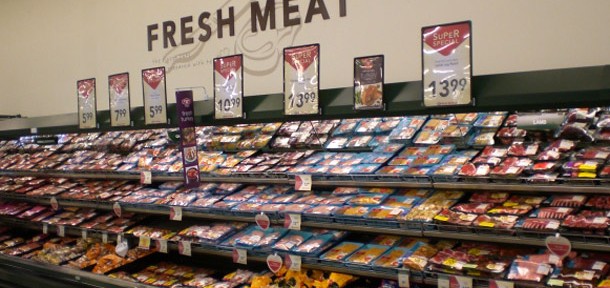-
The miracle of Peanut Butter
Difficulty: Easy Time: 20 mins to roast nuts, 10 mins to process Plastic saved per year: about 12 1kg plastic containers What’s the catch?: For this to be completely plastic-free, you’ll need to buy the peanuts from a bulk food store – and fill your own container. Skip to recipe
-
Meat without plastic

The Problem One of my biggest stumbling blocks has been how to buy meat without plastic. Sausages, chops, steak..you name it, it comes wrapped the same way in every supermarket in the country. Whole chickens only come in plastic bags. Fresh fish over the counter? At New Word they offer a one-size fits all paper/plastic/foil laminate bag which…
-
Homemade pasta

Today’s packaging-saving effort was making my own pasta. As a family, we eat our fair share of pasta. Dried pasta is quick, easy and relatively affordable. Of course, it inevitably comes in plastic packaging, and that is the issue. I would be very happy to buy dried pasta in bulk if I was able to, but…
-
Dear Sanitarium

Today I sent this email to Sanitarium. We are a big fan of Weet-Bix but now I have guilt over the fact that the box is lined with plastic. Dear Sanitarium, Like most good Kiwi kids, I was raised on Weet-Bix. I now have young children of my own and they love Weet-Bix too.…
-
Being clear about no plastic when shopping
Today was both exciting and frustrating. It was exciting because today I put two new resolutions into action: the first is to buy bread from the bakery to avoid the plastic bags supermarket brands come in, and the second is to bring my own containers to the butcher and get them to put the meat directly…